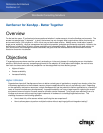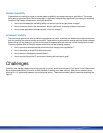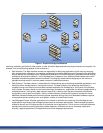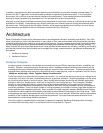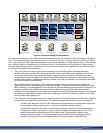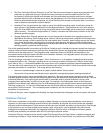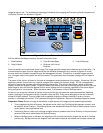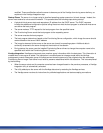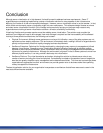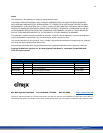
7
Dev/Test: Utilizing XenServer Enterprise in the Dev/Test environment allows for easier synchronization with
production at a great cost savings. A production-level virtual server could be copied into the Dev/Test
environment, allowing for identical environments with little administrative overhead, albeit minor changes
would be required to link a dev/test server with a dev/test backend. As a Dev/Test environment must remain
flexible to execute different test scenarios, the virtual Dev/Test environment could quickly take on numerous
roles as different virtual servers could be started.
Hardware: Even if organizations are unable to move to the 64bit computing model, virtualization allows for
more options on the hardware selected for the XenApp architecture. Organizations can now utilize servers
with 16 or even 32GB of memory by slicing the physical server into multiple virtual servers each consisting of
4GB of memory. This allows the organization to “virtually” overcome the 4GB memory limitation of the 32bit
Windows operating system.
Storage Optimization: Physical systems rely on local storage that is shared with an operating system not
dedicated to file sharing. Each XenApp server relies on the correct components, installation and configuration
of the local storage in order to perform at the most optimal level. However, when XenApp servers are moved
into a virtual environment, local storage is no longer an issue because XenServer utilizes shared network
storage. The shared network storage should be a dedicated device that is dedicated to file sharing and whose
operating system is optimized for file sharing.
One of the greatest benefits from combining XenServer Enterprise with a XenApp environment comes from helping to
improve overall utilization because the resources from underutilized servers are appropriately allocated and shared
with the rest of the resource pool. This integration adds a significant amount of flexibility and availability to the
environment while allowing for better utilization of the hardware. However, this integrated solution still poses a few
noticeable challenges that must be overcome.
The first challenge is focused on virtual images. Every virtual server is, in all respects, a separate physical system
encapsulated within a file. Although a physical server can now host multiple virtual servers (1:Many), at the virtual
level, there is still a 1:1 relationship between the virtual server and its respective physical system encapsulated file.
The ease with which new servers can be provisioned and brought online can lead to „virtual server sprawl‟ and actually
decrease the benefits of virtualization. This brings about a few concerns:
o How much shared storage is required to support multiple distinct virtual servers?
o How are the virtual servers maintained from an application and operating system patching perspective?
The second major concern is around physical/virtual integration. Because some physical systems would not show
business benefits to being virtualized, two different systems must be maintained: the physical and the virtual. They are
maintained differently, thus requiring the administrator to remember what is physical and what is virtual, while
managing them appropriately and with the correct tools. For example, to provide greater levels of fault tolerance,
additional virtual servers were added for the Line-of-Business servers, even though the core servers are physical.
Patching, imaging, etc., for the Line-of-Business servers would follow different processes, not to mention all other
servers within the environment. This introduces greater complexity into the environment, resulting in a higher
probability of manual errors.
XenServer Platinum, when integrated with XenApp, can help alleviate these challenges as the next section will explain.
XenServer Platinum
With server virtualization, we are able to provide for better utilization by sharing resources between virtual servers.
However, this still posed a challenge around flexibility and availability as physical and virtual servers are managed
differently and the maintenance of virtual servers can be even more complex and tedious as the physical. Even though
a physical server can now host multiple virtual servers, each virtual server is still a separate entity that must be
managed and maintained individually. By integrating XenServer Platinum within a XenApp environment, greater
flexibility and availability are achieved while still fully utilizing the physical servers.
XenServer Platinum introduces a new solution called Provisioning Server for Data Centers. Instead of managing and
maintaining hundreds of virtual machine images, Provisioning Server for Data Centers only requires one virtual disk



